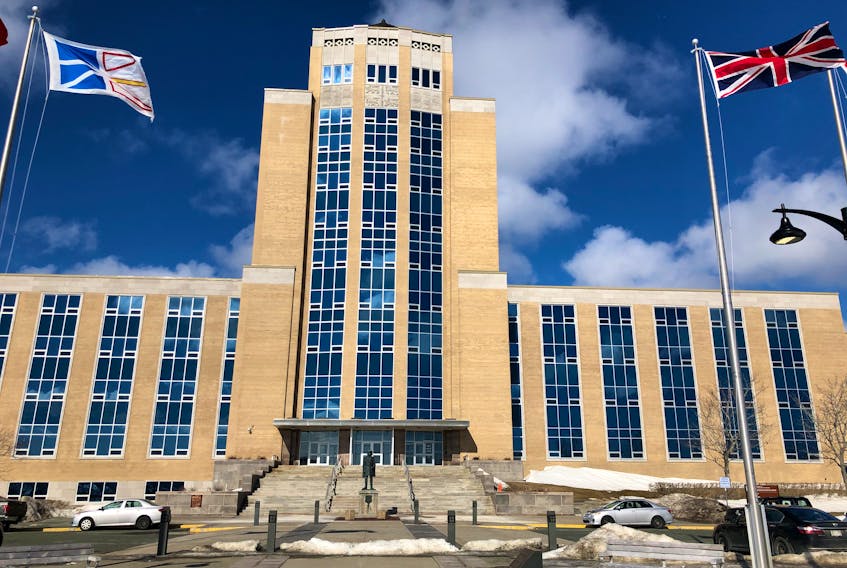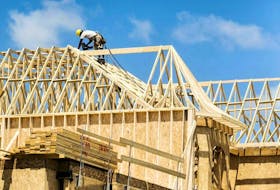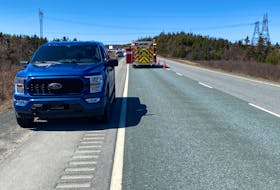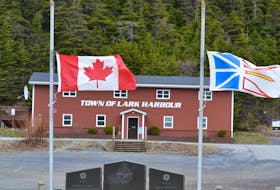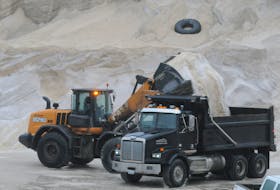ST. JOHN'S, N.L. — Tax increases, reduced spending and federal bailouts are a few of the options before Newfoundland and Labrador as the COVID-19 pandemic and tumbling oil prices leave the province staring down a $2.1-billion deficit.
The deficit represents 31 per cent of the revenues taken in by the province in the 2020-21 fiscal forecast announced on July 24.
Michael Yake, senior credit officer with Moody’s Investor Service, says on the national scale, the COVID-19 pandemic and low oil prices mean the size of the deficit in this province is worse than what is seen in other provinces.

“That is one of the highest level of deficits compared to other provinces. It’s relatively in line with what we see in Alberta, another oil-producing province, but the non-oil provinces are fairing a little better — generally in the 20 per cent deficit-to-revenue range,” said Yake.
“Newfoundland and Labrador is dealing not only with the COVID-19 pandemic, but also the impact on oil prices and reduced oil production as well. It’s getting the double shock of the pandemic and the oil shock.”
Yake says recovery is not impossible for the province and the country at large, should containment of the COVID-19 pandemic continue.
“That is one of the highest level of deficits compared to other provinces. It’s relatively in line with what we see in Alberta, another oil-producing province, but the non-oil provinces are fairing a little better." — Michael Yake, Moody’s Investor Service
“On the expenditure side, what we’re anticipating is we do see the pandemic as being a temporary event. There’s going to be an economic contraction in Canada and Newfoundland and Labrador this year, but we do expect growth to begin in the second half of the year and continue into next year as well. Economically, there should be a stronger rebound than what we saw a couple of years ago in 2015, but additionally, the extra spending that is sort of behind the deficit should be temporary as well.”
The province saw a $261-million increase in spending related to health care this year, with $90 million directly attributed to the COVID-19 pandemic. A $560-million drop in oil revenues compounded issues for the province.
Russell Williams, associate professor with Memorial University’s political science department, says while the double whammy of pandemic and oil shock has left the province in extraordinarily bad fiscal straits, the challenges started long before the coronavirus.
Williams points to tax cuts in the Danny Williams era as one moment the fiscal situation of the province is still suffering from.
“The province made a choice to try and pursue lower tax rates than the rest of Atlantic Canada and substantially lower than Quebec, for example,” said Williams.
“That was done on the basis that we were going to develop some sort of competitive advantage by having lower taxes, which would lead to our economy diversifying. That hasn’t worked out, obviously. We’re as dependent on oil as we ever were.”
The net debt of the province is due to exceed $16.7 billion in 2020-21, driving debt-servicing costs that were already more than what is spent on K-12 and post-secondary education combined to even higher levels.
“The result has been that we’ve been forced into long periods of heavy borrowing to make up the difference. That’s now snowballing out of control,” said Williams.
“Our debt-servicing costs are now double what oil royalties are this year. We’re in pretty deep at this point.”
Williams says the expenditure side of the equation has been better handled than the revenue side.
“The revenue story is absolutely crucial and a big part of what the government needs to do now. Spending has not really gone up since 2013, basically. On the expenditure side, if you control for the increased cost of debt servicing, the government has actually been doing a very good job on holding the line on spending,” said Williams.
“The problem is that very little has been done on the revenue side. Since 2016, taxes have actually been cut again. We’re raising less revenues than we could to help dig ourselves out of this mess.”
In an open letter to Finance Minister Tom Osborne, the St. John’s Board of Trade says collaboration will be key in getting the province out of the fiscal mess.
We’re asking government not to tackle the financial situation of our province alone. There are many Newfoundlanders and...
Posted by St. John's Board of Trade on Tuesday, July 28, 2020
“Government should not tackle this alone. Please leverage the expertise and insight that exists throughout our province to inform our path forward. We can help. Labour organizations can help. Opposition parties can help. The federal government can help. Economists can help,” reads the letter.
“Let’s all be part of the solution. Let’s come together to have in-depth discussions. Call it a task force. Call it a think-tank. Call it whatever you want. The goal is more important than the label. The Government of Newfoundland and Labrador does not need to do this alone.”
The full text of the letter is here.
A full budget with updated financial figures will be presented in September.
Twitter: @DavidMaherNL

